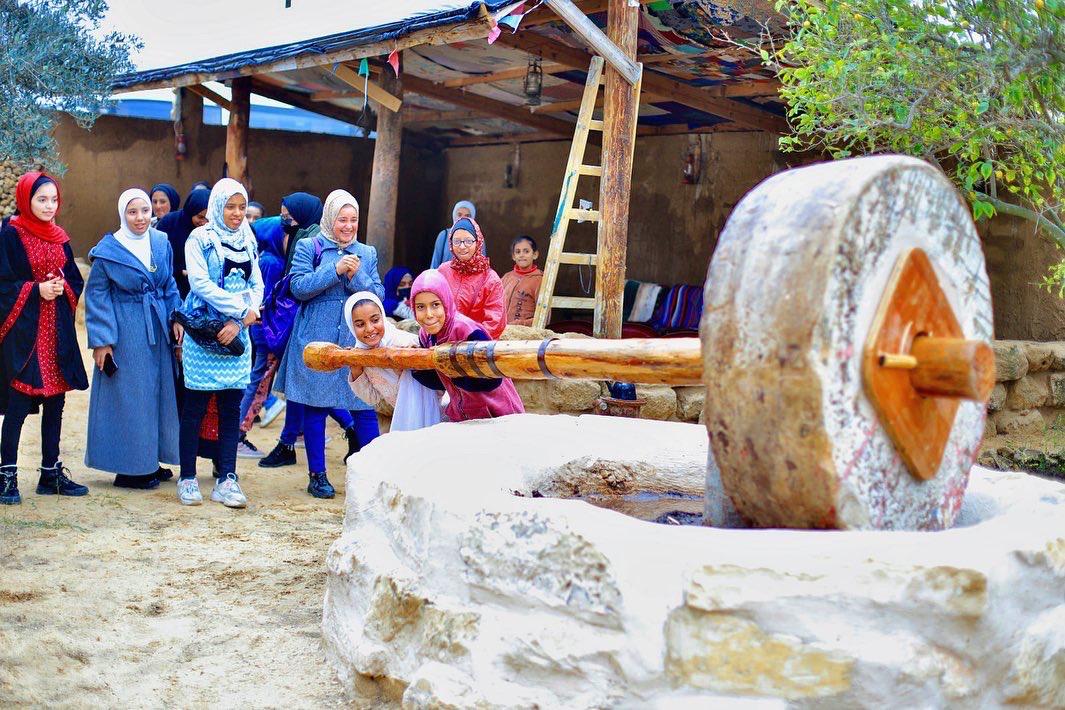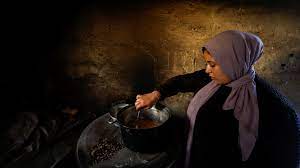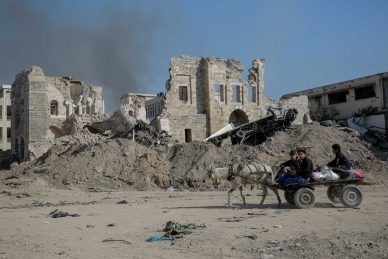In a very old house in Al-Qarara a town in the northern Gaza Strip a young Palestinian man Mohammed Abu Lihiya 30 revives an ancient olive oil production system using a recently-discovered granite wheel.
The traditional stone wheel olive press was discovered three years ago on the Al-Farra Family farm. The family gifted it to Abu Lihiya to put it in his traditional museum. But Abu Lihiya felt sorry for such an ancient treasure not being used so he recently decided to use it. He put it in an old house and is preparing it for the next olive harvest season.
The craft of pressing olive oil has been honed over centuries. Traditionally processors used stone or granite wheels to crush the olives. According to Abu Lihiya this stone wheel is thought to be from the Roman era about 2000 years ago when it was used to mash the olive grain by placing the olive seed in a big stone plate. The stone is moved using a horse or a camel through the wooden shield that extends horizontally from the middle of the stone hole and is clasped in a column. The center is fixed in the middle of the stone plate and the wooden shield is placed on the back of the animal by attaching it to an iron service. The animal then revolves around the plate to move the stone and the process of mashing and kneading the olives is completed through multiple repetitions. Then the mashed olives are taken to a stand and pressed on a stone press to release the olive oil which filters through a stone channel and the oil collects in a stone basin.
“This traditional process of pressing olives creates extra virgin olive oil which has more flavor and aroma than virgin olive oil which is pressed in modern mills” Abu Lihiya explained.
For Palestinians the olive tree carries more than an economic significance. The olive tree symbolizes their identity history and attachment to their occupied land. According to UN figures around half of the agricultural land in the occupied West Bank and Gaza is planted with olive trees.
Muhammad Abu Lihiya accompanied by his wife and a number of plastic artists organized the launch of a museum in 2016 in his town Al-Qarara collecting over 3500 artifacts and heritage objects over the past years.
“Our main aim is to raise awareness of our imperiled treasures” Abu Lihiya says. “We need the new generations to remember our history and heritage before the Zionist occupation steals it as they have many times before” he continues. “The Qarara museum serves our aim of keeping our traditions alive. It contains several sections: a section that contains copper metal wood and iron pieces a section that contains sharp tools such as daggers and swords and a section that contains tools that were used in plowing in addition to a collection of radio television and old cameras.” It also includes a section containing a group of glass boxes in which there are various samples of attractive colored rocks and coins symbolizing various eras and civilizations.
Abu Lihiya along with his team are preparing for establishing an ancient traditional village similar to his museum in his town Al-Qarara. The town which is located east of Khan Yunis includes many natural and archaeological sites such as Sheikh Hammoud Al-Kharab Al-Rubaia Road and others. This town and the beauty of the green fields in it are an easy target for strikes from Israeli occupation forces which are stationed on its eastern borders.
Abu Lihiya who grew up in this town says that his town extends from the lands of the 1948 occupied Negev in the east to the sea in the west and has abundant archaeological and touristic possibilities. He has organized several tours of his town to educate visitors about its heritage. “The Israeli occupation believes that the elderly will die and the young will forget but I say that it’s in your dreams. We will never ever forget or forgive or surrender. We will fight and keep enlightening the generations to our last breath.”
– Wafa Aludaini is a Gaza-based journalist and activist. She contributed this article to the Palestinian Information Center.














